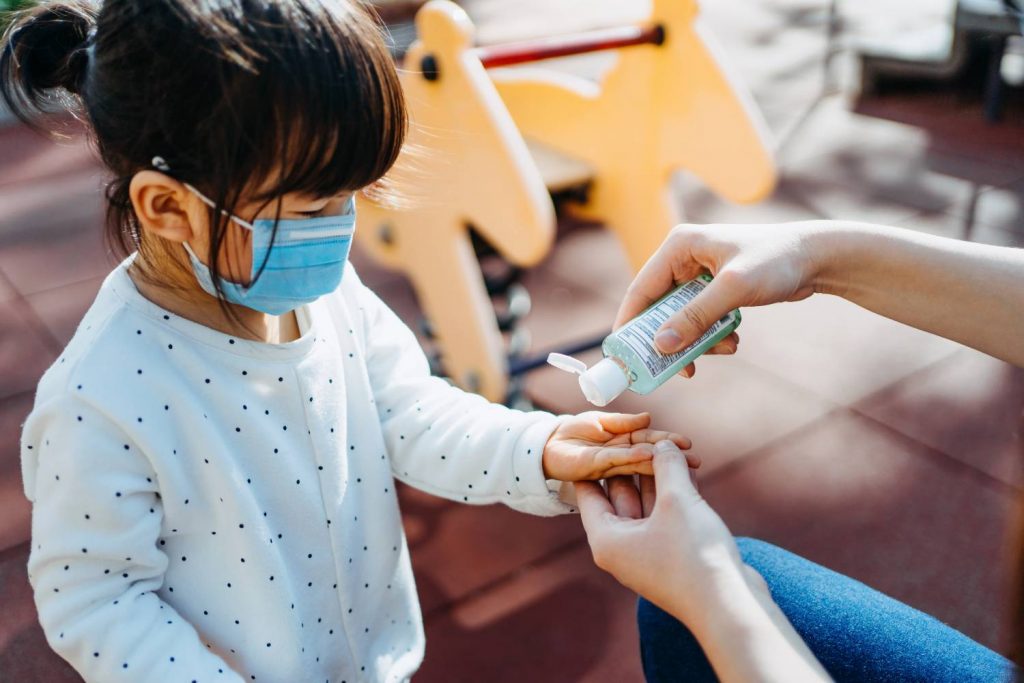Early in the pandemic, we used this blog to offer resources for responding to COVID-19, recovering from the economic losses, and reimagining life after the pandemic.
By now, everyone has read about testing, contact tracing, social distancing, treatment protocols and vaccines. Whether or not you have had COVID yourself, all of us have experienced firsthand the impact the pandemic has had on our daily lives.
Despite the pandemic’s restrictions being lifted in many parts of the world, the threat is not over. There is still much to learn as we work together to reduce the effects of the virus.
At this stage in the pandemic, there are some crucial priorities that can help us mitigate and reduce its long-term effects.
Importance of vaccinations; understanding vaccine efficacy
COVID-19 vaccines were developed in less than a year, thanks to new "plug and play" technologies like messenger RNA and vector vaccines. Each vaccine developed offers a layer of protection against the disease, each with its own level of efficacy.
"People's immune systems are very diverse and respond in different ways, as do their medications, and you can't account for all the variability in people in a clinical trial," said Dr. Meg Schaeffer, SAS Epidemiologist. So typically, you see an efficacy number in a clinical trial that is fairly high. But then when you get into the real world, you always see a slight reduction in efficacy for all the reasons I just mentioned, variations in people and uptake, and administration and dosing. And so, you take a couple percentage points off and that's the real-world effectiveness."
RELATED: A deep dive into COVID-19 vaccine efficacy and the future of the pandemic
Vaccination remains among the most important priorities as we work to move into a post-pandemic world. It is essential to preventing the spread of contagious diseases. Vaccines are especially important for at-risk populations such as young children and older adults.
In most cases, vaccines prevent breakthrough infections and the ability for vaccinated people to spread the virus.
Tracking infection, hospitalization and death rates
Most states and regions have now developed processes and procedures to track and understand the rates of infection, hospitalization and death. We need to continue these practices and continue to adjust our behaviors when levels are high in our community– though those changes will be less drastic as more people are vaccinated.
Tracking related data is also important in quantifying the real-time impact that the pandemic has on our hospitals. With data updated daily, hospital officials can forecast resource needs and identify opportunities to share medical resources or transport critical patients to facilities with adequate capacity to provide care. Using these metrics, we can monitor the rate of infection and shifts in disease severity.
RELATED: Visualize COVID-19 vaccine data using SAS Viya
“I think it's very important that citizens are aware of local infection rates in order to modify behavior appropriately. Public health departments continue to share data about the incidence rates and hospitalizations, as well as where testing sites are located,” said Alyssa Farrell, Director of Health and Life Sciences Global Industry Marketing at SAS. “Separating fact from fiction is an important lesson in data literacy for the concerned public right now.”
Gathering this data also offers insights to prioritize and re-allocate resources as well as share best practices for reducing the effects of the virus.
Protecting our health care workers
The daily pressure of working on the frontline of the pandemic has put a strain on many health care workers’ mental well-being, offering opportunities for data to step in and help.
For instance, the Australian medical research facility Black Dog Institute uses data to find new and better ways to treat mental illness.
The research facility, in collaboration with SAS and others, developed a digital platform called The Essential Network (TEN) for health professionals. The service links health professionals to a free, confidential network of individualized mental health support.
“Now we have a year of historical data that we can start to build some more reliable predictive models for resource needs. What if we were able to provide the same amount of care for patients, but we had more flexible shift schedules that provided more mental health breaks for our front line workers?” Farrell said.
TEN empowers the health care worker at the center of a range of care options, empowering them to choose combinations of care that match their needs while removing barriers to access. Through TEN, health professionals can tailor their care and take positive steps towards managing mental health.
Supporting our students and educators
The COVID-19 pandemic has also put a strain on students and teachers.
After months of remote learning, many of those same children have returned to the classroom and it is important to reinforce mitigation strategies such as social distancing and mask-wearing to keep those students in school.

“For some children, it's the first time they've been in a classroom. They may have missed the kindergarten year or the first year of middle or high school because it was virtual. Now they’re in person. They're adapting to a new learning environment, but these kids still feel the stress of the COVID-19 situation. In addition to bridging the achievement gap and building resilience, I’m concerned about rising mental health issues in our youth. I hope that we can continue support for mental health services for children, teachers and parents as part of an education curriculum that takes the whole person into account,” Farrell said.
A few school districts across the US have done just that and gathered data to understand just how much of an effect the COVID-19 pandemic has had on graduation rates and educational outcomes during the last 18 months.
School leaders in Minnesota have implemented a longitudinal data system that integrates early childhood education, K-12, postsecondary and workforce data, including the paths people take through education to employment to create a panoramic view of educational outcomes.
With this, school leaders can synthesize data and turn it into meaningful stories that drive effective policy and programs focused on helping Minnesota children, families and communities thrive.
Preventing the next pandemic
How do we think ahead to prevent the next pandemic? Developing anti-viral drugs that can be used to treat and prevent the spread of new viruses is crucial. New work from the University of North Carolina is designed to do just that.
The partnership is focused on the work of UNC's Rapidly Emerging Antiviral Drug Development Initiative (READDI) which is developing broad-spectrum antiviral drugs to have on the shelf to prevent future pandemics
To advance UNC's efforts, SAS research and development teams are applying advanced machine learning techniques to integrate multiple biological data sets of the deep lung environment of severely ill COVID-19 patients. These analyses will be used by university researchers to identify targets for new COVID-19 antiviral drugs.
While the initial focus of the joint team is on addressing new treatments for COVID-19, READDI and SAS will continue to work together to meaningfully accelerate drug discovery for other antiviral drugs.
Read more: SAS and UNC-Chapel Hill partner to accelerate antiviral drug development
Finally, we must understand that what matters now is what has always mattered: reducing the risks of COVID-19 while minimizing economic damage and mental health stressors.
These things have proved hard to balance, but we have more tools than we did at the onset. And we will continue to find better ways to address each of these important needs by understanding the data.


2 Comments
SAS is great analytic tool and has simplified data analysis in all sectors.
me intereza estos temas